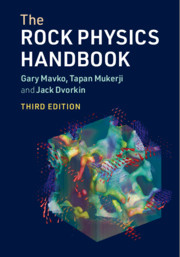Book contents
- The Rock Physics Handbook
- Reviews
- The Rock Physics Handbook
- Copyright page
- Contents
- Preface to the Third Edition
- 1 Basic Tools
- 2 Elasticity and Hooke’s Law
- 3 Seismic Wave Propagation
- 4 Effective Elastic Media: Bounds and Mixing Laws
- 5 Granular Media
- 6 Fluid Effects on Wave Propagation
- 7 Empirical Relations
- 8 Flow and Diffusion
- 9 Electrical Properties
- Appendices
- References
- Index
4 - Effective Elastic Media: Bounds and Mixing Laws
Published online by Cambridge University Press: 05 March 2020
- The Rock Physics Handbook
- Reviews
- The Rock Physics Handbook
- Copyright page
- Contents
- Preface to the Third Edition
- 1 Basic Tools
- 2 Elasticity and Hooke’s Law
- 3 Seismic Wave Propagation
- 4 Effective Elastic Media: Bounds and Mixing Laws
- 5 Granular Media
- 6 Fluid Effects on Wave Propagation
- 7 Empirical Relations
- 8 Flow and Diffusion
- 9 Electrical Properties
- Appendices
- References
- Index
Summary
If we wish to predict theoretically the effective elastic moduli of a mixture of grains and pores, we generally need to specify: (1) the volume fractions of the various phases, (2) the elastic moduli of the various phases, and (3) the geometric details of how the phases are arranged relative to each other. If we specify only the volume fractions and the constituent moduli, the best we can do is predict the upper and lower bounds (shown schematically in Figure 4.1.1).
- Type
- Chapter
- Information
- The Rock Physics Handbook , pp. 220 - 308Publisher: Cambridge University PressPrint publication year: 2020
- 1
- Cited by

